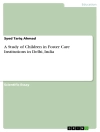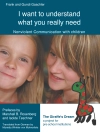This book has been designed to add to the study and experience of early childhood ideas and experience in an international context. The focus is Australia and China with three research projects explored to provide insights into the history and development of early childhood education in each country. The work offers a consideration of the complexity of early childhood education in local and global contexts, at a time when global relationships can benefit from moving beyond better cultural understandings to greater connections and reciprocity.
Each study has accompanying empirical data to support the interpretations offered. The first part of the book presents historical context and examines policy issues, the growth of the early childhood education workforce and the development of curriculum approaches in each country. The two projects that follow describe teachers’ perspectives of children’s learning and an in-depth study of a collaborative higher education program that details stakeholder experiences. By studying participant attitudes and ideas in each country we have been able to share early childhood knowledge and discuss perspectives through early childhood languages, like perspectives on the role, importance and nature of play and learning.
Daftar Isi
Part 1: The reform agenda in both Australia and China .- 1. Introduction: Early childhood education policy reforms in Australia and China.- 2. History, theory and practice: Early childhood in Australia and China.- 3. A Comparative Study of early childhood policy: Building the early childhood teacher workforce in China and Australia.- P art II: Comparative curriculum and its role in remodelling early childhood practice and pedagogy .- 4. The role of formal curriculum documents in early childhood education reform: China and Australia.- 5. Education and care for children under three in Australia and China- pedagogical perspectives.- 6. Education and care for children three – six years in Australia and China – pedagogical perspectives.- Part III: Transnational teacher education: a case study .- 7. Transnational education and an international partnership: A case study of a Collaborative Articulation Program (CAP).- 8. Early childhood teacher education: an international/transnational experience.- 9. Transnational education: Perspectives from academics.- 10. Transnational education: Perspectives from students.- Part IV: Conclusion and implications .- 11. Conclusion and implications.
Tentang Penulis
Josephine Ng is a senior lecturer in the School of Education at RMIT University. She completed her Ph D on early childhood education, practice and play, in a Singapore early childhood setting. Josephine has an undergraduate degree in business studies and leadership in early childhood has become a main teaching focus. As program manager of early childhood programs, as well as the international partnership described in part 111 of this volume she has managed, taught and researched in the area of comparative perspectives. Future research is planned to examine student mobility and placement experience.
Berenice Nyland is an adjunct professor in the School of education at RMIT. Her Ph D was on preverbal language in group settings. Her teaching and research have a focus on languages of childhood, including music and a book on Child Art. Berenice is on the editorial committee of the Australasian Journal of Early Childhood. She is presently completing a bookon the adult’s role in children’s developing musical cultures.












